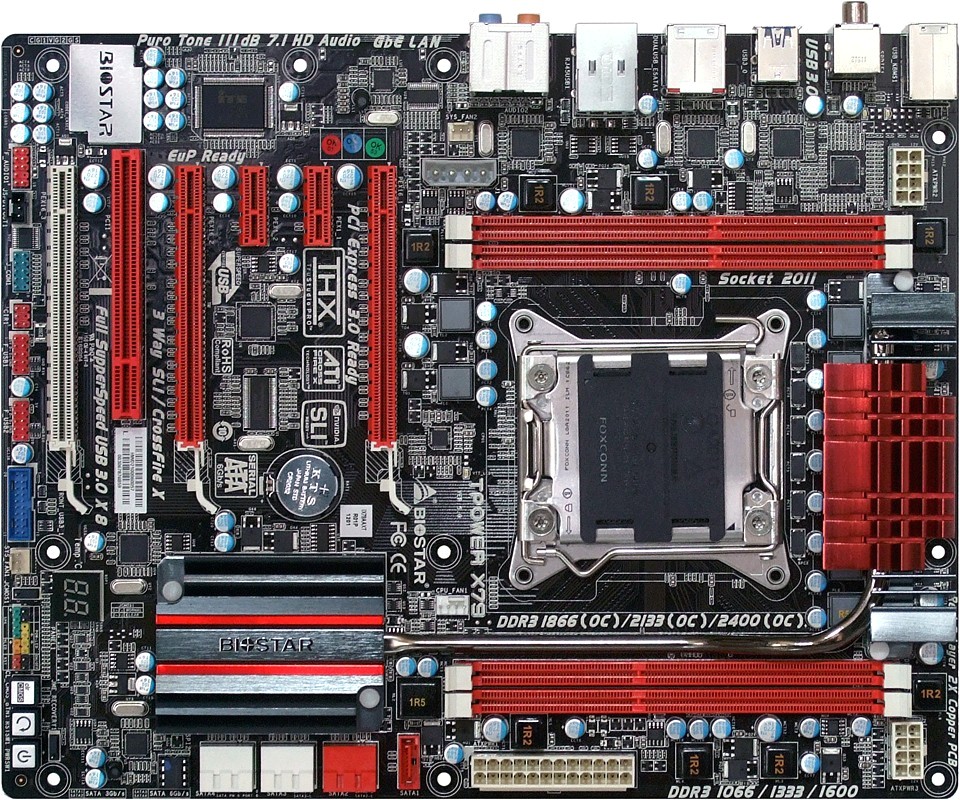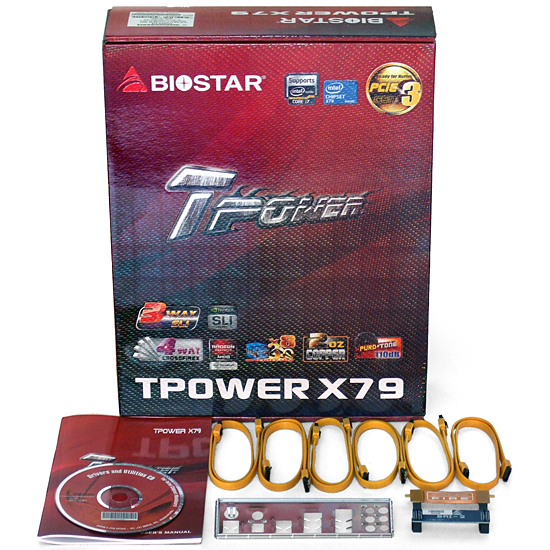Six $200-$260 LGA 2011 Motherboards, Reviewed
We know that Intel's X79 Express platform hosts the fastest desktop processors in the company's portfolio. But can it be made more affordable? We round up the least-expensive $200-$260 motherboards to determine how much you have to give up for cheap X79.
Biostar TPower X79
Often perceived as a contender for extracting some of the best overclocking value, Biostar stepped its game up a bit with its TPower X79 by providing twice as many USB 3.0 ports compared to most competitors. We find six of those connectors on the I/O panel and two available via front-panel header.
Biostar's customers aren’t even forced to give up a bunch of other features to get those extra ports, since the board still features a third-party SATA/eSATA controller, three PCIe 3.0 x16 slots electrically wired to run at x16-x16-x8, a Port 80 diagnostics display for overclocking failure analysis, and integrated power/reset/CLR_CMOS buttons for bench testing.
The TPower X79 even has two high-capacity EPS12V connectors to feed its mid-capacity voltage regulator. Perhaps the most significant compromise is a quartet of memory slots, giving you one shot to grab the quad-channel kit you need and no room for an upgrade. With a Web price of only $230, that sacrifice is fairly small in exchange for such a wide range of added controllers.
Unfortunately, installing a third graphics card will be problematic for performance enthusiasts, since the extra-stiff USB 3.0 front-panel connectors of most cases block the installation of most cards. As with Asus' board, two-way CrossFire and SLI are preferred, and Biostar provides an extra space between the top two x16 slots to assist airflow between a pair of boards.
Competitors could learn a thing from Biostar about low-cost installation kits, as the TPower X79 includes six SATA cables to support all of the chipset’s native ports. But perhaps Biostar could also learn something from ASRock, the company that enables three-way SLI with a bundled bridge and smarter header placement. The TPower X79 is almost exclusively focused on dual-card graphics configurations, though going the single-GPU route is certainly an option too.
Get Tom's Hardware's best news and in-depth reviews, straight to your inbox.
-
I like Asrock boards. I have an 880GM-LE mATX and a Z68 Pro3 Gen3 ATX and both are good performance and price-performance wise.Reply
-
hellfire24 Asrock is dominating both high end and mid range market.extreme3/gen3 1155 is awesome and cheapest pci-e 3.0 sli capable mobo.Asrock FTW!!!Reply -
Achoo22 ReplyQuite simply, the costs associated with Sandy Bridge-E are higher, in part because of Intel's prices and also because the boards are more difficult to design.
Since the boards all have vastly superior profit margins, your statement is misleading. Why is everyone too afraid to reveal the truth about motherboard pricing? -
AlexIsAlex Would it be possible, in future motherboard reviews, to include a measure of the cold boot (POST) time? This is something that different bioses can be differentiated on, and UFEI offers the potential for very fast boots if manufacturers take advantage of it properly.Reply
A comparison of the time between the power button being pressed and the installed bootloader starting would be very interesting to me. I was thinking it might be easiest to measure this by having no OS on the boot media and measuring the time to the "please insert boot media" message, but I'm sure you can think of other ways of doing it.
I'm also informed that on some boards the boot time varies dramatically dependent on whether any Overclocking is enabled, as compared to the stock settings - that would also be worth knowing. -
americanbrian your feature table says the asrock extreme 4 comes with an 8 phase voltage regulator, but the text of article says 10 phase...which is it ?Reply -
KT_WASP crisan_tiberiuASRock = ASUSReply
not anymore, asrock is no longer affiliated with Asus and is owned by Pegatron Corp. -
memadmax I wish tom's would do a "best motherboards for the money" or something close to that.Reply



